Design

IOE 537 — Ergonomics for Inclusive Design (class project)
Client
Omnis - Autonomous Shuttle Ride Sharing Service

For this project, the target user group was people with early stage dementia who live independently. The Committee of Geriatrics of the Royal Society of Physicians states that:
"Dementia is a global impairment of higher cortical functions, including memory, the capacity to solve the problems of everyday living, the performance of learned perceptual motor skills and the correct use of social skills and control of emotional reactions, in the absence of gross clouding of consciousness."
To understand the target user population of people with early stage dementia, a literature review was conducted. Findings indicated that:
- Outdoor activities are important for people with dementia for self-value
- Changes to cognitive abilities can create anxiety
- Outside places can be viewed as both ‘therapeutic’ and frightening
- Familiar landmarks/photographs can help with reorientation tasks
- Technology (such as phones) has wide range of acceptance
- Disadvantaged travelers (low-income, older populations, persons with disabilities) would benefit more from mobility-on-demand (MOD)
The following cognitive triad summarises the difficulties experienced by the target user, and the expected demands of the task of ordering an autonomous shuttle.
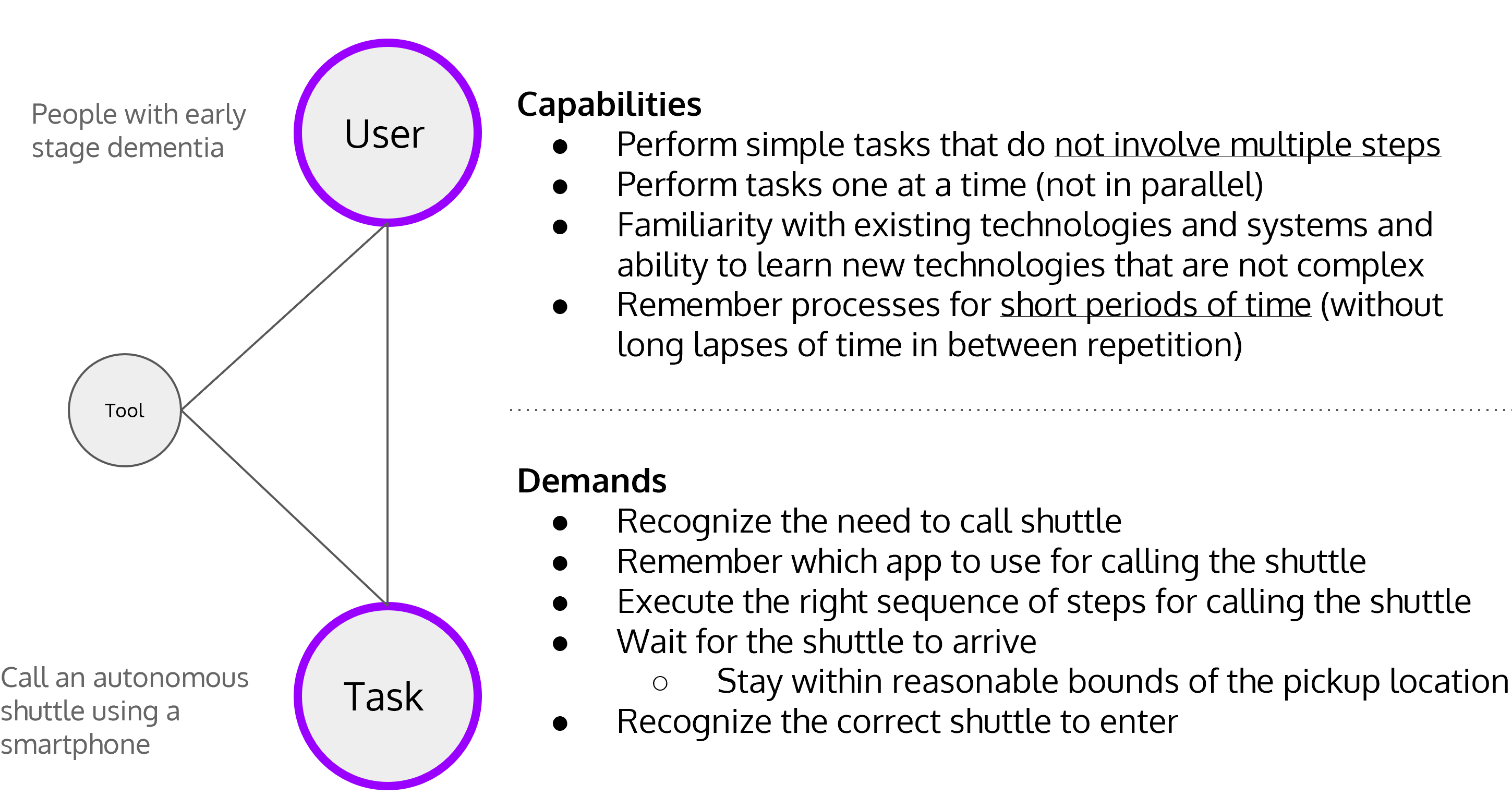
Based on the literature review, detailed three user personas were created:
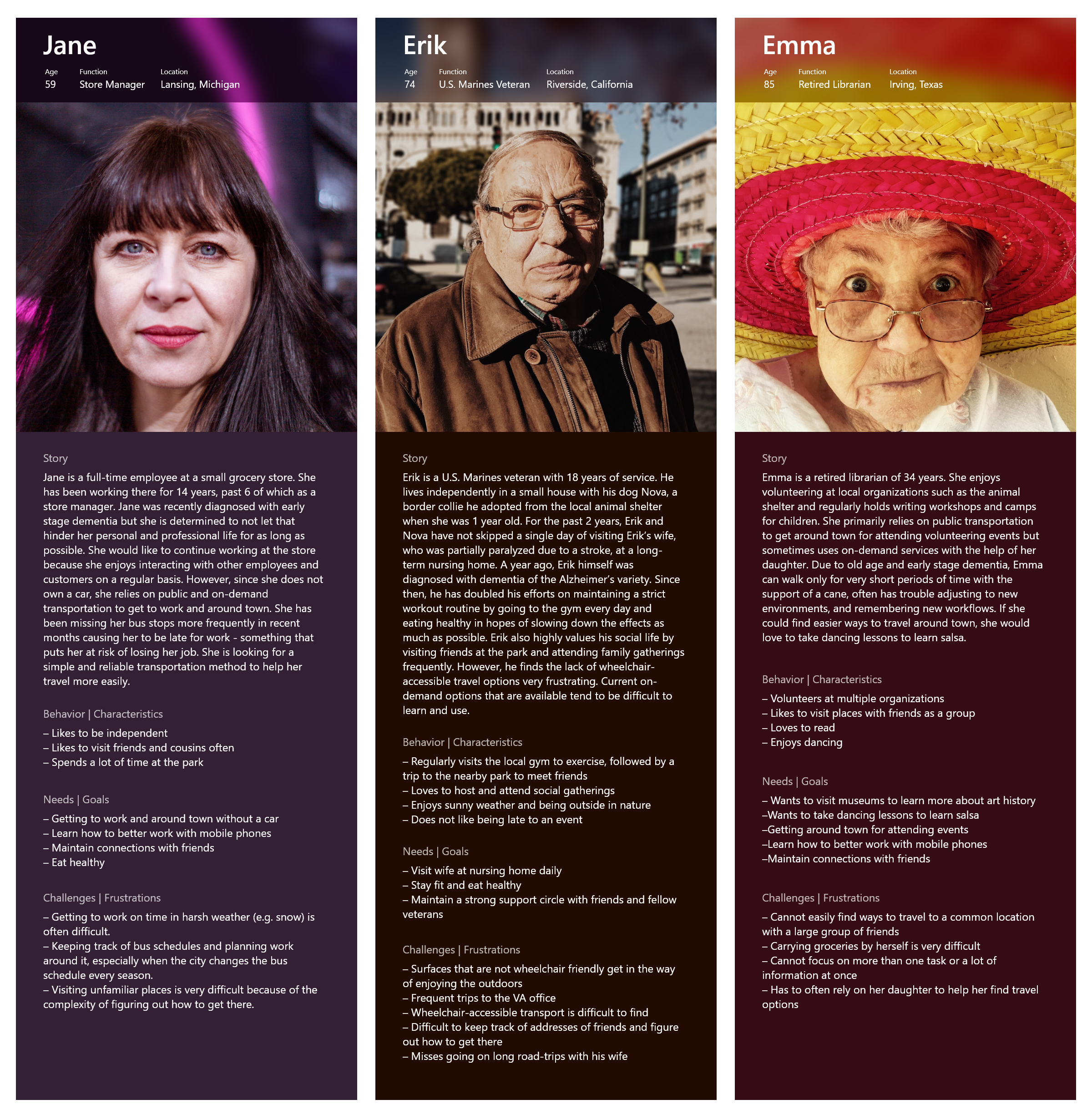
An initial task analysis was also conducted to better understand the specific tasks that users might need to perform to request a ride from an autonomous shuttle service:
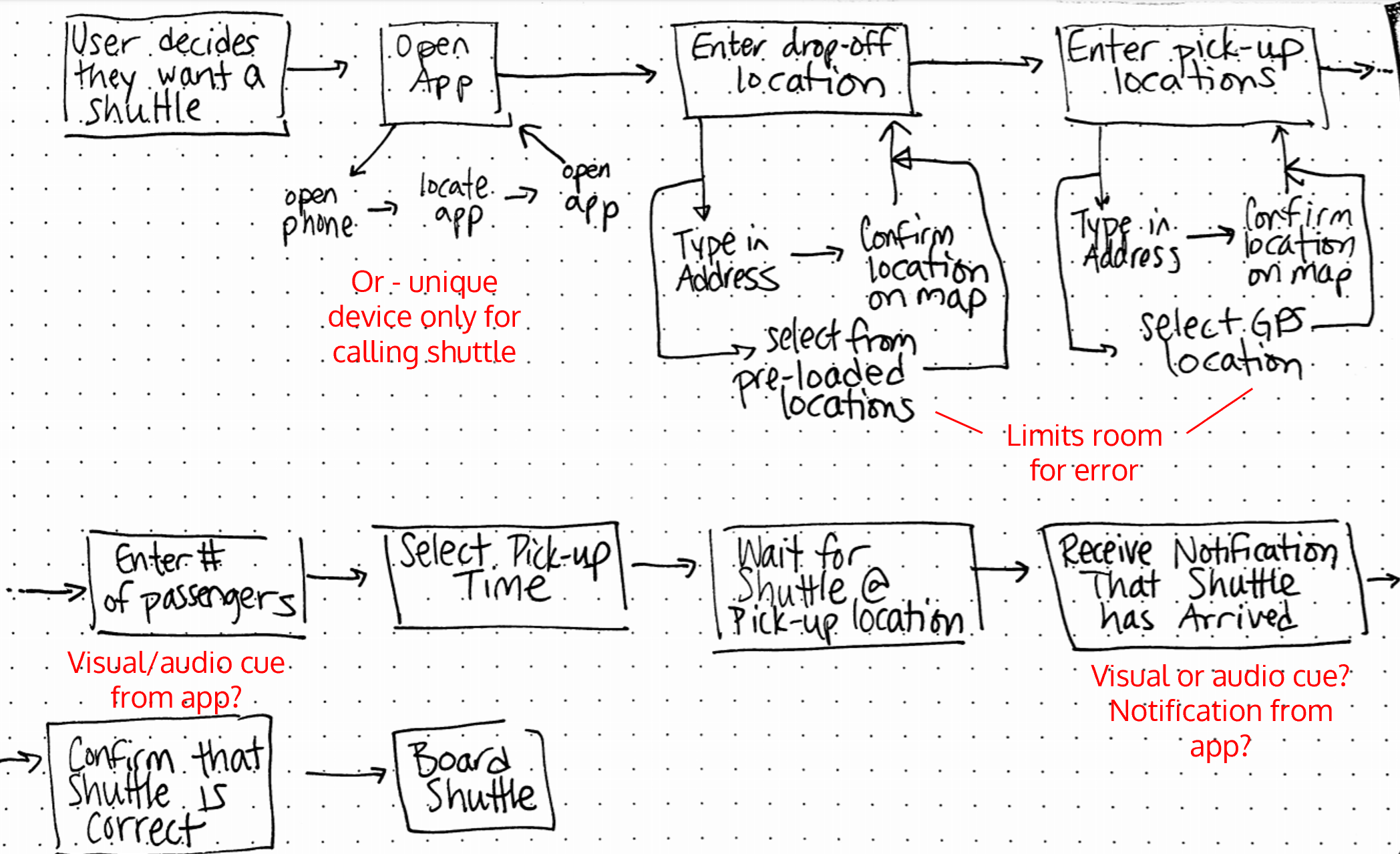
Use-case Scenarios
In addition to the user personas and the initial task analysis, specific use-case scenarios were developed to capture possible edge-cases and to understand from alternate perspectives the challenges that might be faced by the target population.
Scenario 1: Emma goes to an art museum
Emma is planning on going to the Dallas Museum Of Art with 3 of her close friends today. Since Emma is the only one out of all her friends who uses the autonomous shuttle service, she'll have to request pickup and drop off for everyone. Her friends will be paying her back for the shuttle costs in cash. Additionally, because this is a longer trip than the ones that Emma makes regularly around town, she would like to keep her daughter up to date on her whereabouts just in case she needs any help.
Scenario 2: An unexpected visitor
It's a bright and sunny day in Riverside, California. Erik, as usual, will be visiting his wife at the nursing center at 9:00am, followed by going to the gym at 11:00am, where he works out for about an hour before heading home to freshen up and eat lunch. Since some of his fellow veterans and long-term friends will be at the Fairmount Park later today, Erik is also planning on going there at 4:00pm. After enjoying a nice breakfast with his wife, Erik and his dog Nova head outside at 10:45am to wait for the shuttle to arrive in front of the nursing home. While waiting, Erik notices that Nova is no longer beside his wheelchair, which is surprising given that she is a very well-behaved dog. Unbeknownst to Erik, Nova had taken off to chase a cat down the street. In addition to looking for where Nova has gone, Erik must also now alert the autonomous shuttle about potential delays and changes in the pickup location.
The Omnis care system was developed in three parts:
- The phone app to request a ride and to track progress of requested shuttles
- A web portal to be used by close family members to monitor shuttle progress
- A watch app for multimodal feedback and notifications
The following wireframes were developed for each component based on the task analyses, user personas, use-case scenarios, and an understanding of the problem context from a review of the literature:
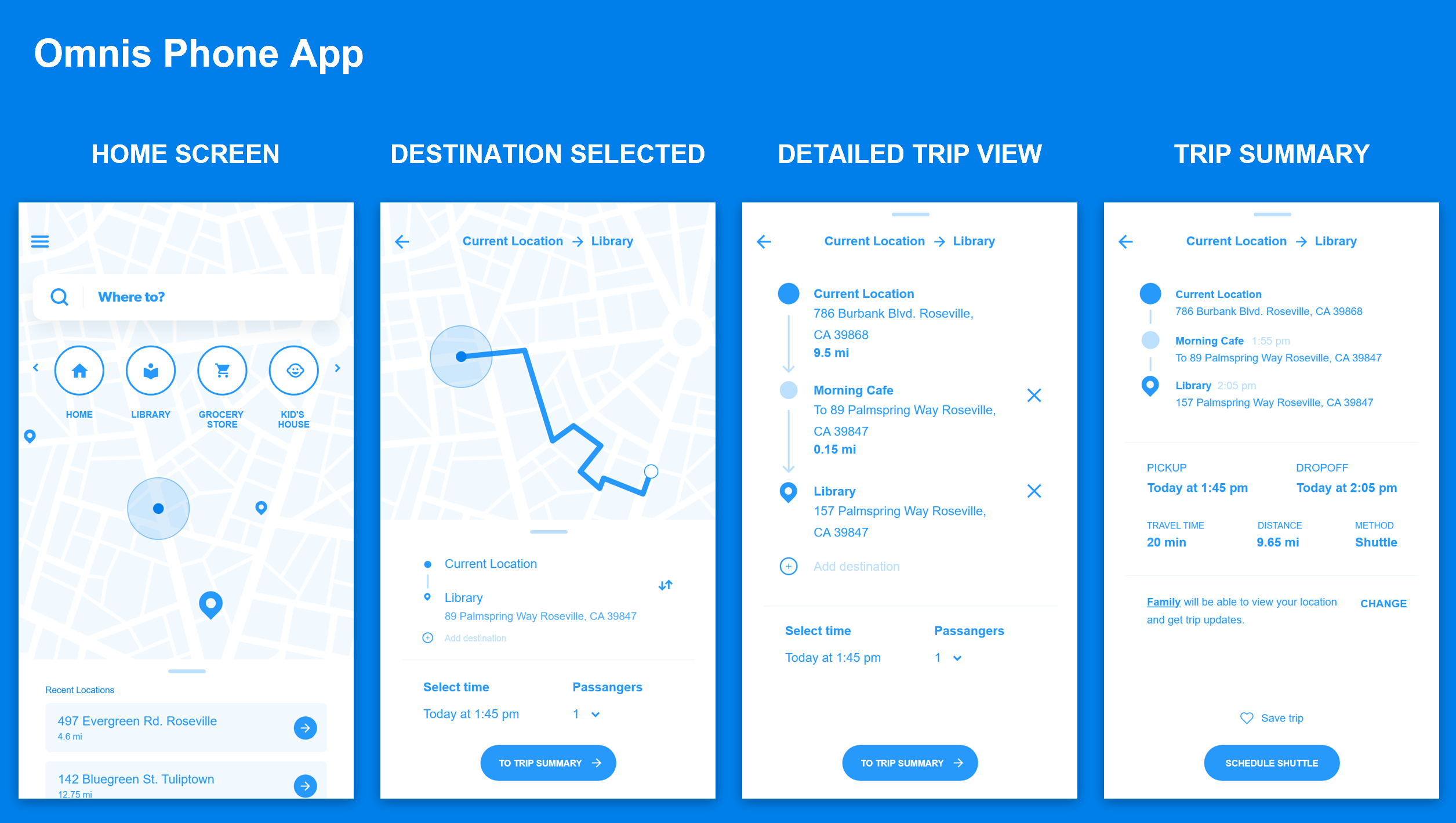
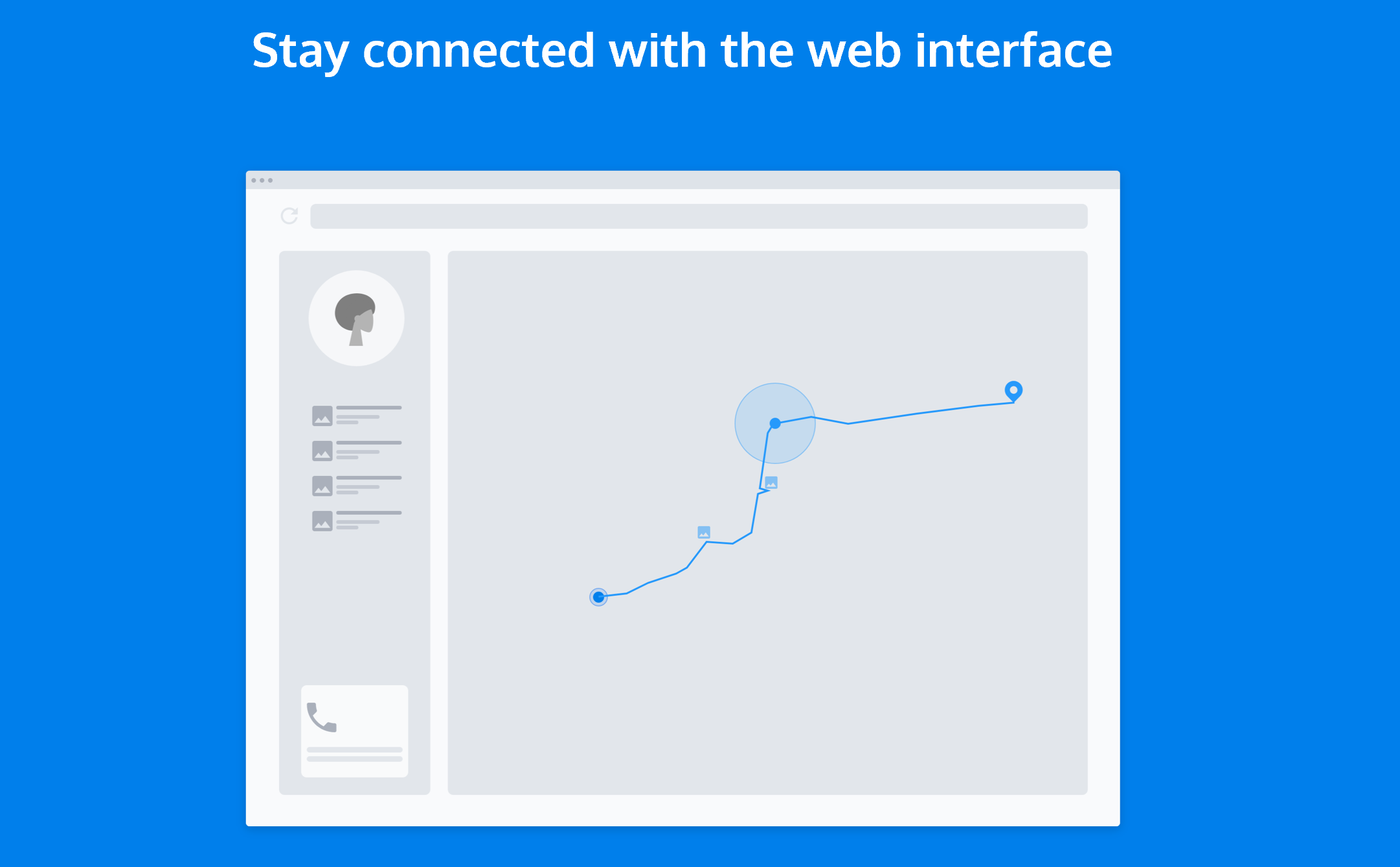

The initial task analysis was updated after wireframe generation, and additional task analysis diagrams were created for interacting with the web portal and watch app.
Phone App Task Analysis
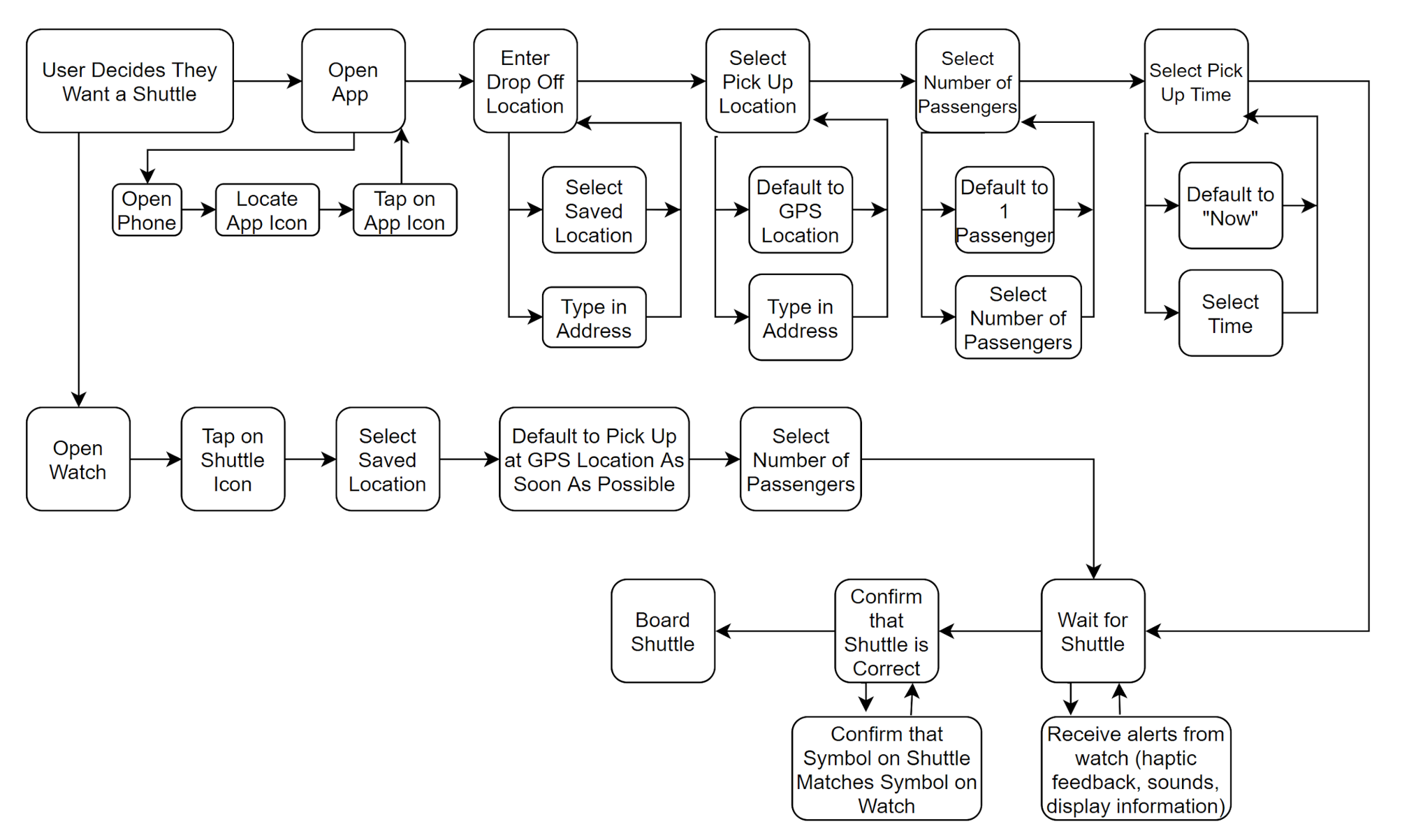
Web Portal Task Analysis
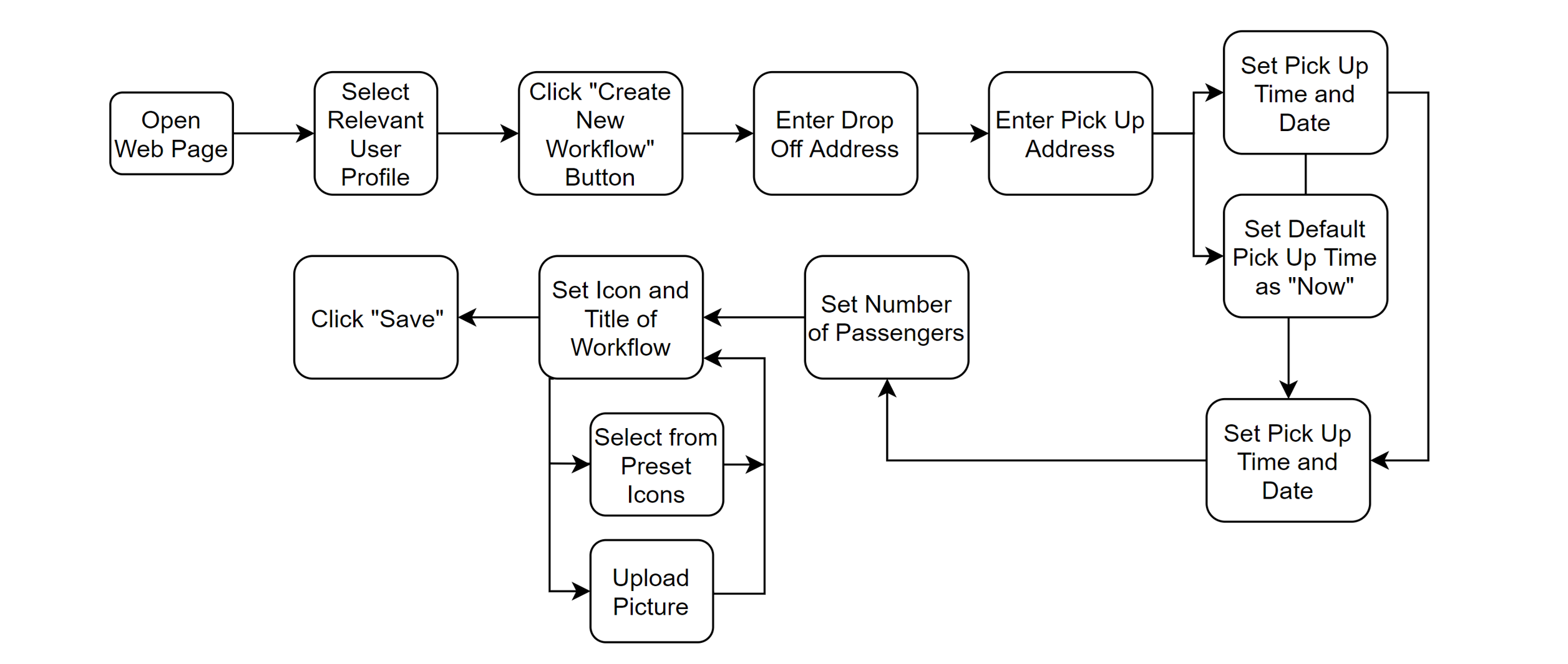
Watch App Task Analysis

After iterating through several versions of the wireframes, the following mockups and interactive prototypes were generated:
Phone App Mockups


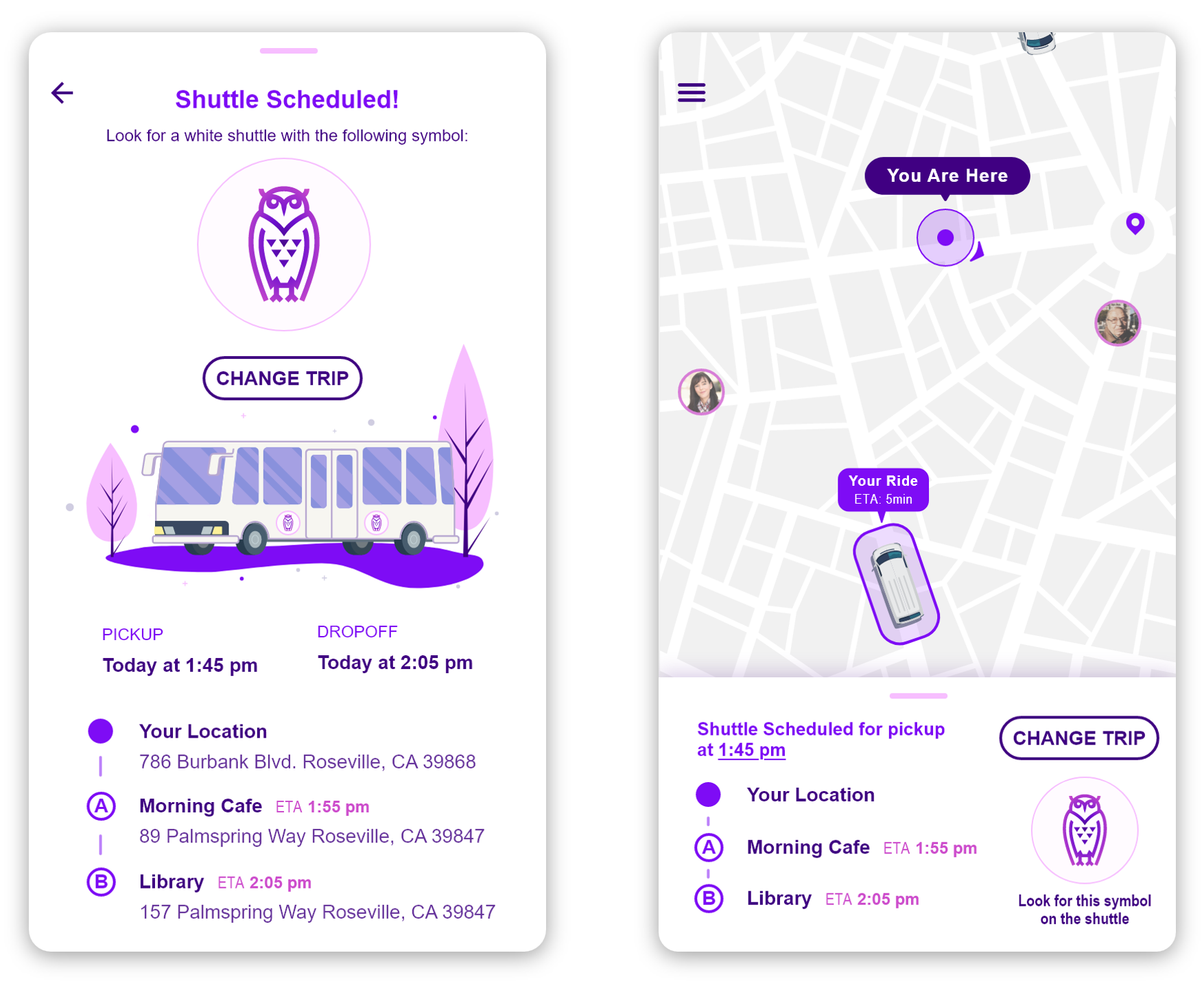
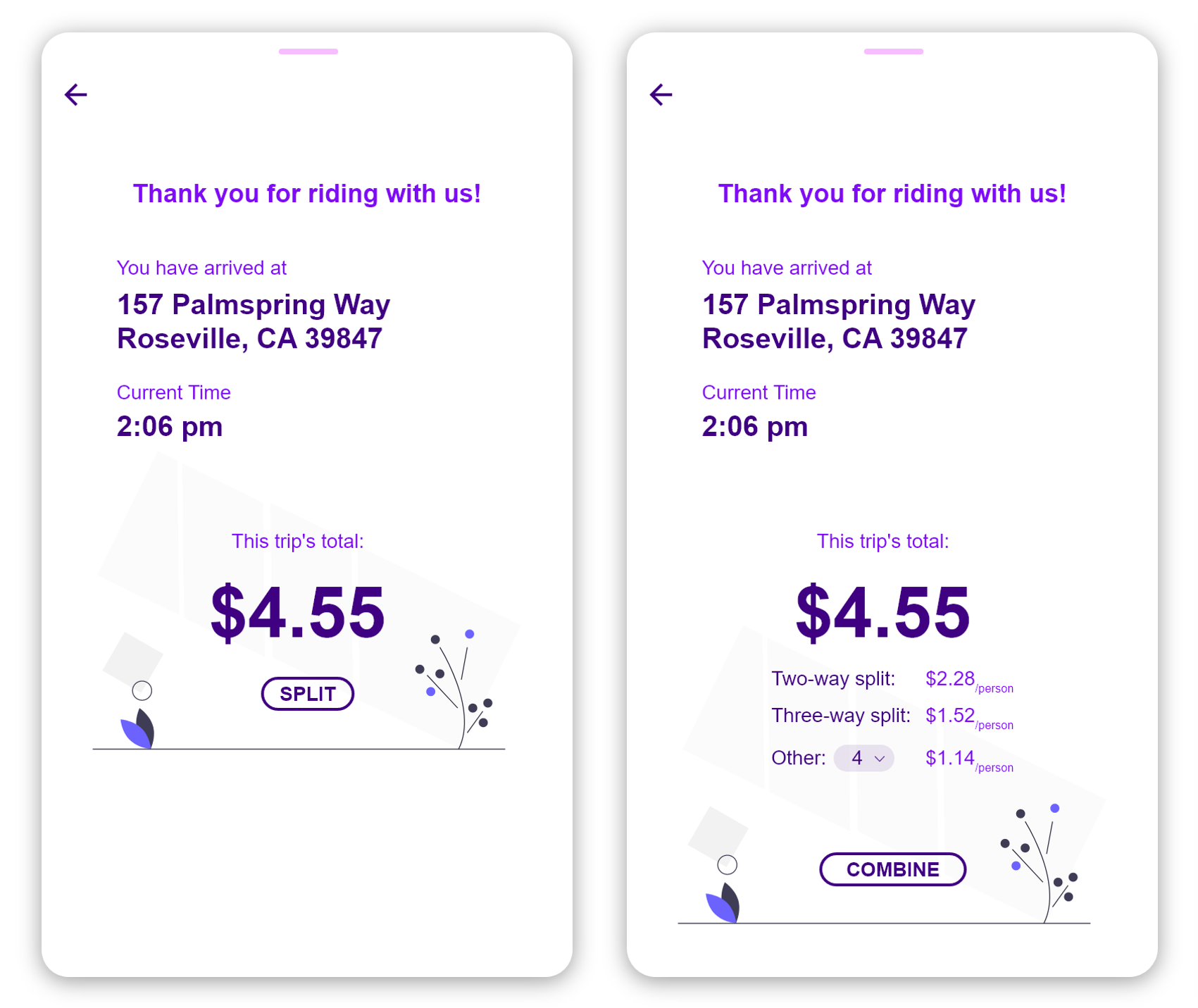
Web Portal Mockup

Watch App Mockups


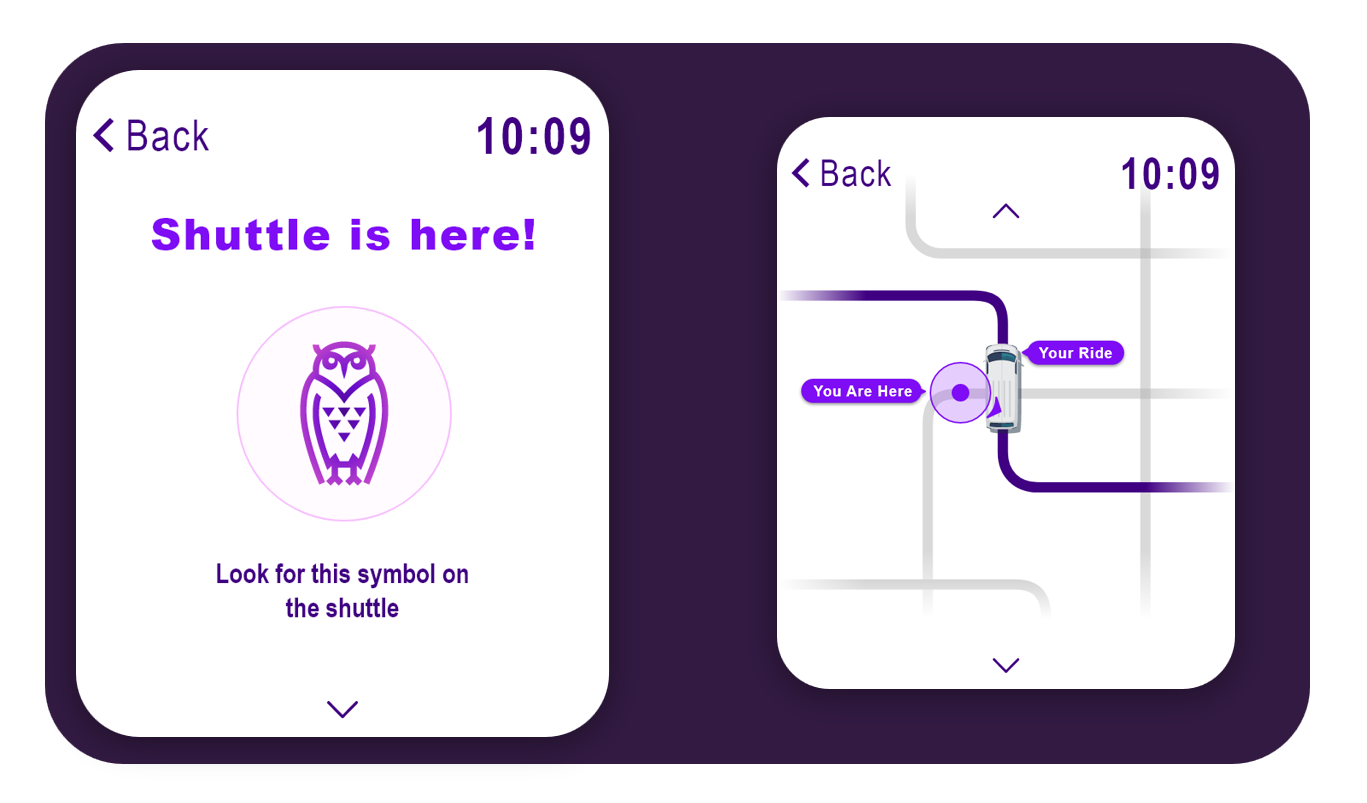
References
Brittain, K., Corner, L., Robinson, L., & Bond, J. (2010). Ageing in place and technologies of place: The lived experience of people with dementia in changing social, physical and technological environments. Sociology of Health & Illness, 32(2), 272–287. https://doi.org/10/d7n5vk
The College Committee on Geriatrics. (1981). Organic Mental Impairment in the Elderly Implications for Research, Education and the Provision of Services. Journal of the Royal College of Physicians of London, 15(3), 141–167.
Yan, X., Zhao, X., Han, Y., Van Hentenryck, P., & Dillahunt, T. (2019). Mobility-on-demand versus fixed-route transit systems: an evaluation of traveler preferences in low-income communities. arXiv preprint arXiv:1901.07607.